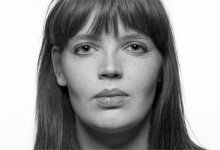
Born in Nylstroom on the 19th July 1946 in the Northern Transvaal, now known as Limpopo, Lucas Cornelis Malan was the fifth of six children born to a cabinet maker and his wife. His humble beginnings did not foretell his significant academic career or the prodigious literary success and influence he would bring to bear on the development of Afrikaans language teaching and the nation’s literature.
After schooling in Pietersburg (Polokwane), Malan acquired the BA degree and Higher Education Diploma at the University of Pretoria and started teaching in Johannesburg, while reading for a BA Hons degree at the (then) Rand Afrikaans University. This was followed by a MA degree in Afrikaans poetry at the University of the Witwatersrand, and another BA Hons degree in Applied Linguistics at the Rand Afrikaans University. Finally he completed a D.Litt. on the poetry of Ernst van Heerden at the University of Pretoria in 1988.
For some 30 years Malan’s involvement as an educator of Afrikaans as a second language inspired and enlivened his contribution as a poet and compiler of several text books, and related literary texts. His poems, articles and reviews have appeared in a number of literary journals, newspapers and anthologies.
Lucas Malan has published six volumes of poetry to date – ’n Bark vir die ontheemdes (A Barque for the Displaced Ones) in 1981; Tydspoor (Time Trail) in 1985; Edenboom (Eden Tree) in 1987; Kaartehuis (House of Cards) in 1990; Afstande (Distances) in 2002; and Vermaning (Exhortation) in 2008. Additionally, he wrote the epic meditative work Hongergrond (Hunger Ground), which appeared in 1994.
The latter deals in selected historical images and fragments with human greed and lust, political intrigue and violence as manifested throughout history and particularly in Southern Africa during the last decades of the twentieth century. His other volumes contain themes of nature, love and death as densely interwoven dominant motifs.
On the death in 1997 of Ernst van Heerden, a major literary figure on the Afrikaans poetry landscape, Malan was appointed the literary executor of Van Heerden's estate and was bequeathed his private library. Malan donated the entire collection of Afrikaans poetry to the Poëziecentrum in Ghent.
Malan retired to the country town of Darling in the Western Cape in 1997. He continued to contribute to school books and appeared at literary festivals despite his poor health. He passed away on 15 April 2010.
In contrast to the often amorphous poetry of many of his contemporaries, Malan writes a relatively conventional kind of verse, with fixed stanzas, rhyme schemes and metre, and with a notable precision and sensitivity as regards his selection of words. In those instances where his verse becomes freer, the unit-forming integrity is conveyed by a fine network of imagery and sound correspondences.
Four poems in this selection come from his latest volume Vermaning, in which the reader glimpses the cosmic passage of the heavenly bodies. They gradually assume human attributes, such as the moon in ‘The stars foretell’, manifesting as a diligent but libidinous and sexually seductive housewife.
Despite a certain lighthearted tone, the book’s basic mood is sombre, as in ‘Visa’, which references the human’s “burden-free journey across the Styx” and his eventual destination among the stars. However, in ‘Night shift’ there is an inclination towards a poignant humour when the hospital staff “chemically anaesthetise” patients so that they can rest for the night.
‘Meditation’ represents a departure from the traditional sonnet form and refers to doves briefly building makeshift nests though still managing to sleep safely. The birds dream of a “progeny unscathed”, while the Southern Cross, with its significance of order and civilisation for those other inhabitants in the neighbourhood, “unwaveringly plummets”. In ‘In camera 1’ the tea-drinking female narrator conjures up an extreme picture of loneliness by her digressions, slipping into English, to convey her perceived status and wisdom as a seasoned midwife.
In ‘Self portrait’, a Shakespearian sonnet, there is a depiction of farewell, an objectification, an accepting view from the outside, a glance past all exteriors, and along with this, a sober reportage of what is being perceived. With Rembrandt, the 17th century master of the view past the exterior, as his metaphor, Malan’s poem delves deeper into the “abyss behind the eyes”. In contrast to the swagger and ostentatiousness discernable in the youth portraits of Rembrandt, now comes the stripping of old age, “verdigte verdriet wat na buite staar” (the “compressed sorrow of the outwardly gaze”). And in the closing stanza everything contracts onto the “I”, who “masterly rewrites himself in the way Rembrandt did”.
Bibliography
’n Bark vir die ontheemdes, Tafelberg, Cape Town, 1981
Tydspoor, Tafelberg, Cape Town, 1985
Edenboom, HAUM-Literêr, Pretoria, 1987
Kartehuis, HAUM-Literêr, Pretoria, 1990
Paradoks en parabool: ’n studie oor Ernst van Heerden se latere poësie, HAUM-Literêr, Pretoria, 1992
Hongergrond, Human & Rousseau, Cape Town, 1994
Afstande, Protea Boekhuis, Pretoria, 2002
Afrikaans is piekfyn: ’n gids by die bestudering van kortprosa en poësie: by die bloemlesings Skakering en Kinders van die aarde, Tafelberg, Cape Town, 2006
Versjoernaal: nuwe benadering tot poësie, Pharos, Cape Town, 2008
Vermanings, Protea Boekhuis, Pretoria, 2008
Links to Afrikaans poems
Daar is net een lamp wat nog brand vannag
Houtbos
Siklus
Articles
Obituary (in Afrikaans) on Litnet




